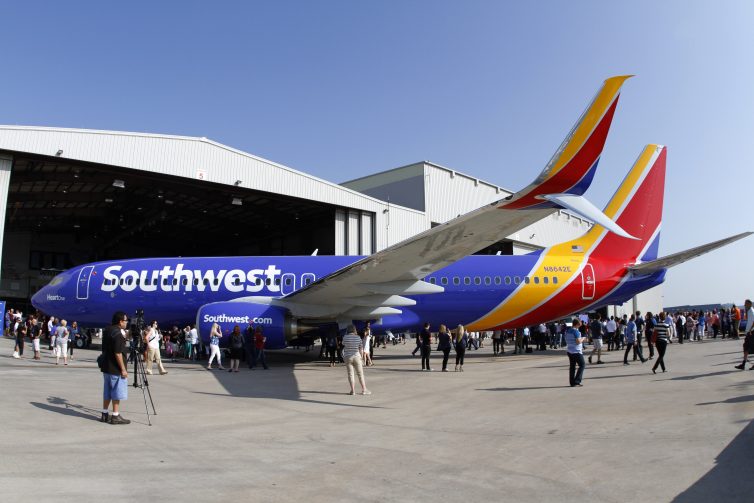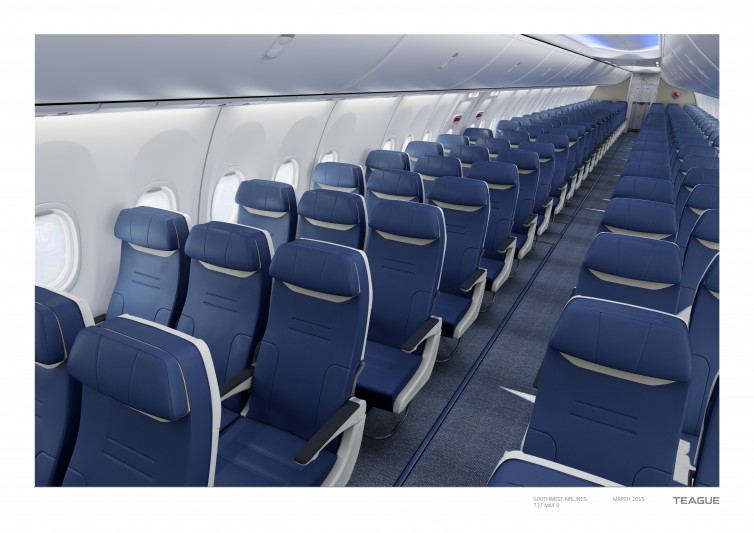
An American Boeing 787-8 (N812AN) at LAX. Southwest does not have any 787s.
A few weeks ago, my esteemed colleague JL Johnson penned a piece extolling the virtues of his favorite carrier, Southwest Airlines. He laid out nine reasons why Southwest was tops in his mind, and quite honestly I didn’t disagree with any of the facts he laid out on why the airline is so immensely popular with so many people.
However, with all the positives Southwest has under its belt, I personally can’t remember the last time I stepped foot on a Southwest 737’¦ at least seven-to-eight years, I think. So if Southwest isn’t so bad, and I think it’s a perfectly fine airline, why have I clocked about 800,000 miles without a single Southwest flight?
First, let’s get one thing clear: This piece isn’t meant to be a hostile response to JL or his story, or even as a ’œSouthwest is bad’ take-down rant. Like I said, he has valid points, and Southwest is a fine airline, one that I even recommend others to fly. The goal of this piece is to give those who are wondering some insight into why someone might choose not to fly Southwest.

Southwest’s Heart One – Photo: Stephen M. Keller for Southwest Airlines
I frequently find myself explaining why Southwest is my favorite airline for personal and business travel. I get this question so often that last year I decided to create a list in my favorite note-taking app to help organize my thoughts. As a self-anointed brand ambassador, frequent flyer, and card-carrying A-Lister, I take this opportunity to educate curious travelers (and future Southwest loyalists) very seriously. Last week, I again had this question pop up and, upon opening my note, I realized I had more than enough content for a full-length AirlineReporter piece. So, without further ado, here are my top nine reasons why Southwest is the best domestic airline.

Mockup of how Southwest’s new seats will appear on the 737 MAX 8 aircraft – Image: Southwest Airlines
I recently flew Southwest Airlines for the first time in a while. I love the airline, I love what they have done for domestic air travel in the US, and I love so many of the people who work there. But I do also LUV having a seat assignment — which you cannot get with Southwest. I feel there is much added stress having to check-in early, making sure you are in the right place in line at the gate, and the worst of all: not knowing where you will sit. However, I have spoken to so many huge fans of Southwest, that actually like the process (mainly my dad and JL).
If you have flown Southwest Airlines before, you probably know the drill. When you check in, beginning 24-hours before the flight, you will be given a letter (A, B, or C) followed by a number between 1 and 60. A1 boards first, followed by the rest of the A group in numerical order. The process is repeated for the B and C groups. While the first fifteen seats are generally reserved for premium fare classes, frequent fliers, and paid upgrades, most positions are assigned in order of check-in time. End up in the C group, you will likely get a center seat (easy to remember – C for Center).

Cabin mockup of the 737 MAX 8 with the new Meridian seats – Image: Southwest Airlines
I recently attended Southwest’s #SWAmediaDay and the unveiling of their new Houston Hobby international terminal. As an unabashed Southwest fan, and card-carrying A-Lister (Southwest’s version of elite frequent flyer), it was an excellent opportunity to get up-to-date on what’s going on behind the scenes at Southwest. But the exhibit which stole the show for me? Finally, a pair of the mysterious new blue Meridian seats for my eyes (and derrià¨re) to literally size up.
Over the past few years I’ve noticed an interesting trend: Airlines release new slimline seats, talking them up to make them seem as if they are greatest innovation to passenger experience since the advent of the jet engine. Immediately following, passengers (and media) quickly cry afoul, often before trying the seats out. Because, all change is bad, right? Who moved my cheese?! If we were to try to find middle ground between these two extremes we might arrive at an analogy comparing slimlines to the Rolls-Royce RB211. A jet engine for sure, but by all accounts an expensive flop which had a part in destroying Rolls Royce, crippling Lockheed, and being one of just a few factors which killed the L-1011 TriStar.
But, I digress… We are talking about something as benign as seats after all, right?

An American Eagle CRJ200 taxiing at LAX, with an Embraer 175 following – Photo: John Nguyen | AirlineReporter
Let’s face it… the 50-seat Bombardier CRJ200 isn’t very popular. At all. You’ll find countless articles and blogs about how much flyers dread flying in it, and how all-around terrible the experience was. Complaints were numerous: claustrophobic cabin, tiny overhead bins that fit only the smallest of carry-on bags, no first class, inoperable lavatories, and so on. This wasn’t limited to just one airline either; CR2s are found in the regional fleets for most of the major U.S. airlines. Coincidentally, many of them are operated under contract by the same regional carrier, SkyWest Airlines.
Does the CR2 deserve its bum rap? Maybe, maybe not (but probably). For some passengers, however, there is hope just over the horizon…




